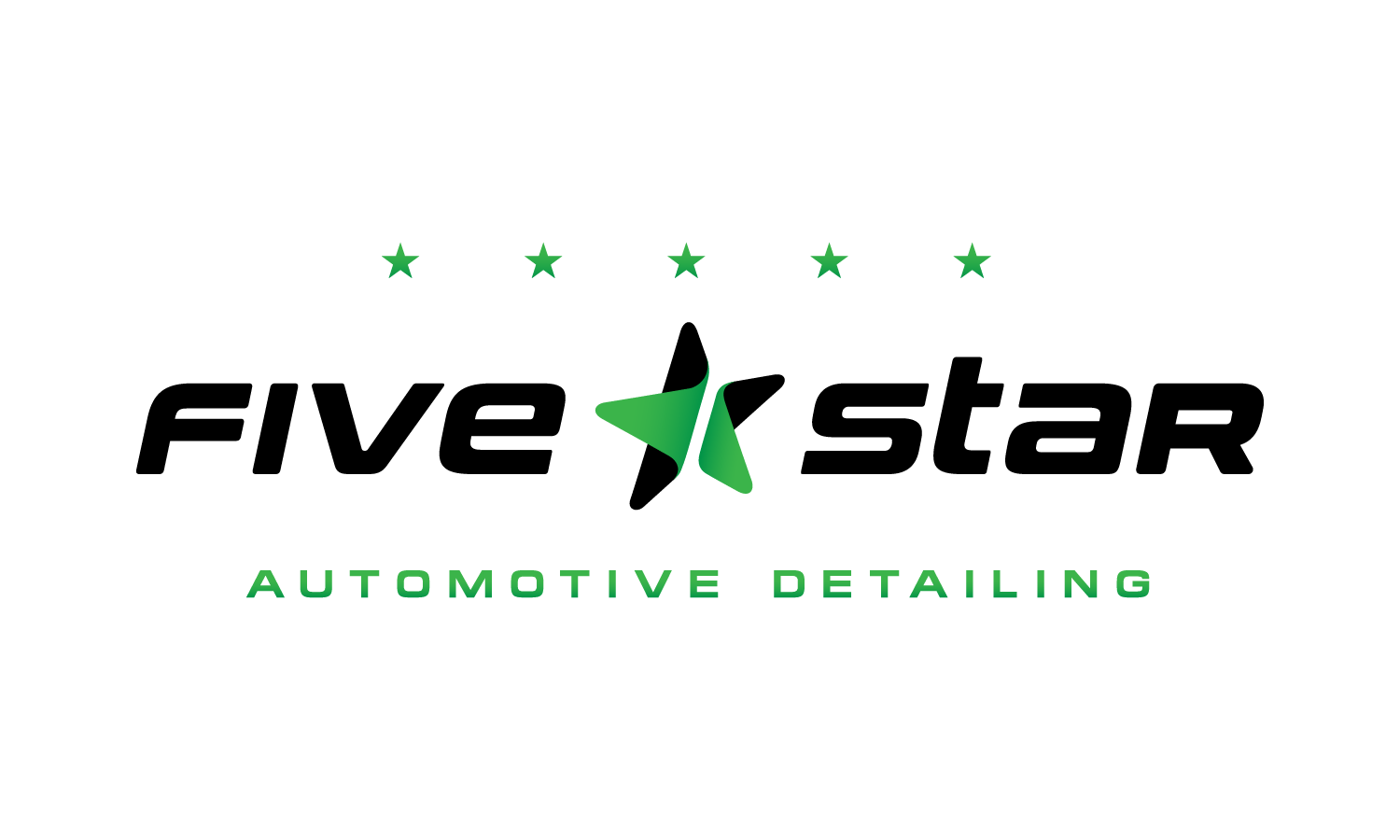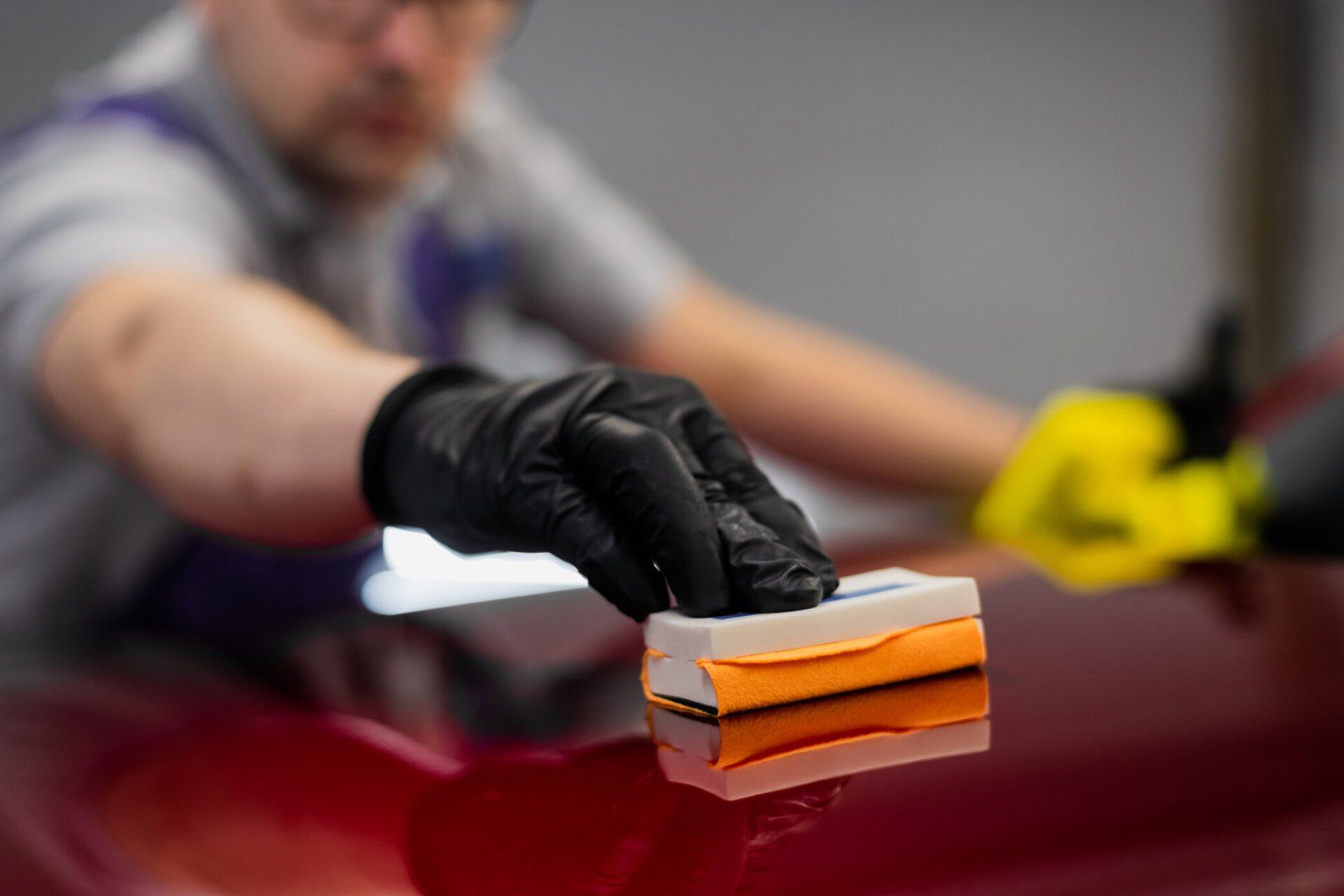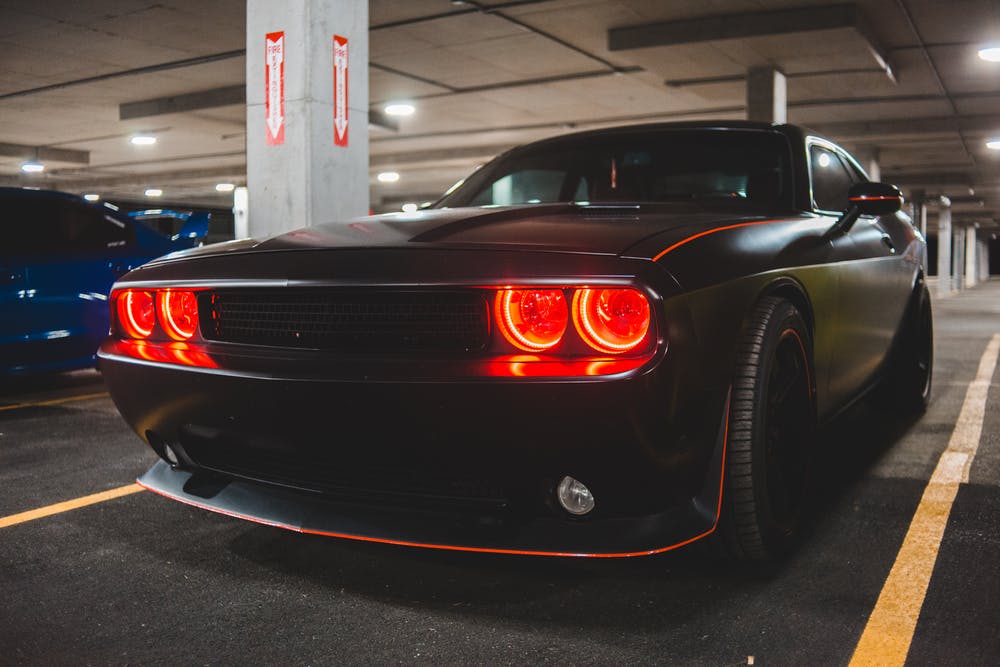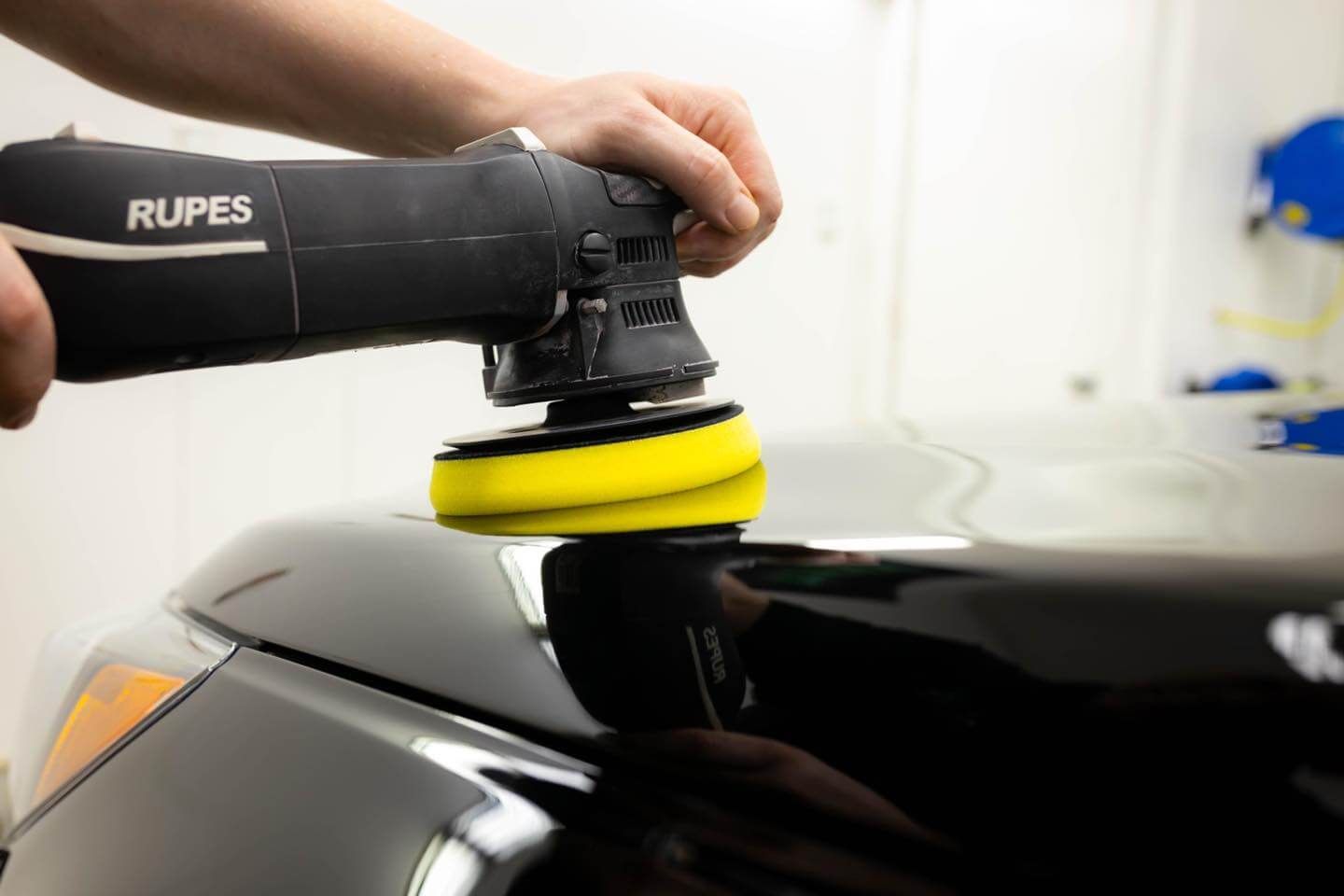Protect Your Car's Paint Against Everyday Hazards With Five Star PPF Service
BOOK NOWConsider driving around Rochester, Minnesota, with your car gleaming in the sunlight as if it had just rolled off the assembly line. It is not a dream; it is what you get when you use paint protection film to protect your vehicle's paint.
But what is PPF? How does it work, and why do you need it?
To help you maintain your vehicle's pristine condition for an extended period, we will address all of these concerns and more in this comprehensive guide to car detailing and protection services.
A Brief Overview of Vehicle Paint Protection Film (PPF)
When it comes to protecting your car's paint from scratches, chips, and fading, paint protection film is a game-changer. It is a transparent, self-healing film that is applied to the vehicle's exterior to act as an additional layer of defense against everyday wear and tear. This high-quality film is made of multiple layers, including a top clear coat that provides resistance against UV rays, dirt, and contaminants.
Consider driving down the highway and coming across loose gravel or road debris. Without any protection, these small projectiles can cause unsightly chips and scratches on your car's pristine paint job. Fortunately, using PPF can lower these risks. The film serves as a protective barrier, absorbing impacts while protecting the original factory finish underneath.
Benefits of Paint Protection Film for Your Car’s Longevity
Now that we have a basic understanding of what paint protection is and how it works, let's explore the benefits it offers for your vehicle's longevity.
1. Preserve the paint: Paint protection film forms an excellent shield against various external forces like rocks, road debris, insects, and harsh weather conditions. By acting as a sacrificial layer, it protects your car's paint from chips, scratches, and fading caused by UV rays.
2. Self-Healing Properties: One remarkable feature is its ability to self-heal minor scratches and swirl marks. Heat from the sun or warm water can activate this self-healing capability, making those imperfections disappear over time.
3. Maintains Resale Value: Investing in paint protection film helps maintain your vehicle's resale value by preserving its aesthetic condition. The film can be removed without damaging the original paint underneath, allowing you to showcase a well-maintained exterior that can attract potential buyers.
4. Easy Maintenance: Paint protection film requires minimal maintenance. It can be washed and treated just like your car's paint, allowing you to keep your vehicle looking pristine without any special upkeep.
5. Longevity: With proper installation and care, it can last for several years, providing long-term protection against the elements. This durability ensures that your car's paint remains in excellent condition for an extended period of time.
6. Seamless Integration: Once applied, it blends in seamlessly with the contours of your vehicle thanks to the expertise of skilled technicians. This means you can protect your car without altering its original appearance.
By understanding the benefits of paint protection film for your vehicle's longevity, you can make an informed decision about protecting your car's paint. To ensure a successful application, however, choose a reputable auto detail shop that specializes in PPF installation.
Let's explore this crucial aspect in detail.
Selecting a Trusted & Reputable Auto Detailing Shop for the PPF Application
When it comes to protecting your car's paint with paint protection film, selecting the right vehicle detailing shop that employs experienced and skilled installers for the job is critical. Consider investing in high-quality materials and allocating time and resources to installation, only to have it completed by inexperienced or untrained workers.
The result? Subpar protection and potential damage to your vehicle's paintwork. To ensure a seamless and effective application, consider the following factors when selecting trusted technicians:
- Professional Experience: Look for technicians who have extensive experience in applying PPF. Trustworthy auto detailing studios, like Five Star Automotive Detailing, often have skilled technicians who specialize in PPF services. Their years of experience will ensure a professional and meticulous application.
- Training and Certifications: Check if the technicians have undergone proper training and hold certifications in PPF installation. A reputable car detailing shop stays updated with the latest techniques and industry standards, ensuring a high level of expertise.
- Customer Reviews and Ratings: Take the time to read customer reviews and ratings about the technician or detailing studio you are considering. Positive reviews from satisfied customers are a good indicator of their skill and professionalism.
- Portfolio of Work: Request a portfolio or examples of previous PPF applications performed by the technicians. This will give you an idea of their attention to detail, precision, and overall quality of work.
Remember, selecting trusted technicians or reputable auto detailing shops for the application is vital to achieving optimal results and protecting your car's paint for years to come.
Professional Standards for Optimal Results
Adhering to professional standards when it comes to automotive detailing services, including PPF application, ensures optimal results that meet your expectations. Attention to detail, product knowledge, and meticulous craftsmanship are all priorities for skilled technicians who uphold these standards.
Professionals follow industry best practices, such as:
1. Thorough Surface Preparation: Before applying PPF, the technicians meticulously clean and prepare the vehicle's surface. This crucial step involves proper washing, paint decontamination, and careful inspection to ensure a clean and smooth surface.
2. Precise Film Alignment and Installation: Professional technicians are trained to align the PPF film precisely with the contours of the car, ensuring complete coverage and protection. They utilize specialized tools and techniques to achieve seamless installation without bubbles, wrinkles, or visible edges.
3. Quality Products & Equipment: Reputable detailing studios prioritize using high-quality PPF materials from trusted manufacturers. These materials offer superior protection against rock chips, UV damage, and other environmental factors while maintaining clarity and durability over time.
4. Post-Installation Inspection: After the PPF application is complete, professionals conduct a thorough inspection to ensure that the film is properly installed and adhered to the paintwork. They also guide maintenance and care to maximize its lifespan.
By adhering to professional standards at every step of the process, skilled technicians guarantee that your car's paint is effectively protected with PPF while maintaining its aesthetic appeal.
The Comprehensive PPF Process
When it comes to protecting your car's paint and preserving its pristine appearance, paint protection film is a highly effective solution. Its comprehensive process involves several key steps to ensure optimal results. First, the surface of the vehicle is thoroughly cleaned and prepared, removing any dirt, contaminants, or imperfections.
This step is crucial for ensuring proper adhesion of the film.
Next, precise measurements are taken to custom-cut the film to fit the specific contours and dimensions of your vehicle. Highly skilled installers then carefully apply the film to the paint surface using professional techniques, ensuring a seamless and virtually invisible installation. Once applied, the PPF is meticulously smoothed out and any remaining air bubbles or wrinkles are expertly eliminated.
Finally, the film is carefully trimmed and the edges are sealed for a finished look that seamlessly blends with your vehicle's original paintwork.
Tools Used in Effective PPF Application
To achieve high-quality results in applying
paint protection film, skilled installers utilize specialized equipment designed specifically for this purpose. One essential tool used in the application is a heat gun. A heat gun helps soften the film, making it pliable and easier to manipulate around the curves and contours of the vehicle's surface during installation.
The controlled application of heat also assists in eliminating any remaining air bubbles or imperfections, resulting in a smooth and flawless finish.
In addition to heat guns, technicians employ precision-cutting tools such as plotter machines or computer-controlled cutting systems.
These tools enable accurate and customized cutting of the film based on precise measurements taken from the vehicle's specific dimensions.
By utilizing these advanced cutting technologies, installers can ensure a perfect fit that covers vulnerable areas while maintaining a seamless appearance.
Moreover, squeegees play an integral role in PPF applications.
These handheld tools help in smoothing out the film during installation, ensuring proper adhesion and eliminating any air pockets or wrinkles. By using squeegees, technicians can achieve a uniform and seamless application of the PPF, providing maximum protection to the vehicle's paint.
Carefully apply the film around intricate body lines and curves using accurate cutting tools and a heat gun to shape the PPF so it blends into your vehicle's surface.
The final squeegee strokes ensure a flawless and bubble-free application.
Post-Installation Care and Maintenance
Once you have invested in a high-quality PPF service for your vehicle in Rochester, MN, it's crucial to ensure proper post-installation care and maintenance.
This will help maximize the longevity and effectiveness of the film, providing your car with long-lasting protection. After the installation, it is recommended to avoid washing or exposing the vehicle to rain for at least 48 hours.
One common mistake many car owners make after the installation is using harsh or abrasive cleaning materials that can potentially damage the film. It's crucial to use mild soap or specially formulated PPF-friendly cleaners along with a soft microfiber cloth or sponge during the washing process.
Avoid using rough materials or scrubbing vigorously, as it can cause scratches on the film.
Remember, investing in PPF is not just about getting the film applied but also about maintaining its integrity over time.
By following proper care and maintenance procedures, you can protect your car's paint and keep it looking pristine for years to come.
Importance of Quality Materials in PPF Services
Using high-quality materials is an important consideration when choosing paint protection film services in Rochester, MN, to protect your vehicle's paint.
The quality of the film itself plays a significant role in determining its effectiveness and durability in safeguarding your car's paintwork. High-quality PPFs are typically made from resilient materials that offer excellent resistance against scratches, impacts, UV rays, and chemical stains.
These high-quality films provide a protective barrier that shields your vehicle's paint from various environmental factors.
Just picture yourself driving down a highway where stones, gravel, and other road debris could ricochet up and scratch your paint job. By applying high-quality films, you can minimize the risk of unsightly scratches or chips on the paint surface and ensure that your vehicle is protected against such hazards.
The ability to heal itself is another well-known characteristic of premium PPF materials.
Exposing the film to heat or sunlight will automatically repair any minor scratches or swirl marks on it. Such advanced features contribute to maintaining the aesthetics of your vehicle and ensuring its long-term value.
Boost Your Car's Aesthetic & Longevity with Premium PPF Packages in Rochester, MN
At Five Star, we enhance your vehicle with high-quality paint protection film packages, acting as an invisible shield against road debris, stone chips, and environmental contaminants. This advanced technology provides an extra layer of defense, preserving your car's pristine appearance for years to come.
In addition, our team of skilled installers exhibits mastery of the craft, executing precise PPF applications.
The process involves intricately fitting the film to every contour of your vehicle, ensuring seamless integration and a flawless finish.
Revitalize your vehicle with a touch of automotive excellence—choose
Five Star Automotive Detailing for unrivaled PPF expertise in Rochester, MN. Visit us online today or contact us directly for more details and to get a
free estimate!






